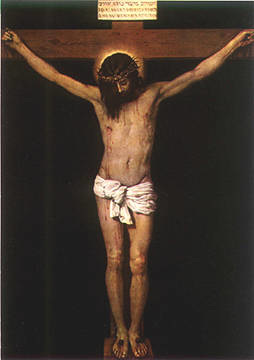|
This page will be updated frequently throughout the rehearsal process as we discuss some more of the symbolism and how it relates to our interpretation of the play.
|
StigmataA term that refers to the wounds Christ received when he was crucified. These wounds include the holes in his hands/wrists and in his feet, and the hole in his side.
There are a small number of people, nearly all Catholics, who inflict the wounds upon themselves to "draw and unite the chosen individual into a special union with Jesus in His passion". These people are known as stigmatists. For more information on stigmata and stigmatists: Wikipedia Mystics of the Church (mainly on stigmatists and the history of the practice) |

